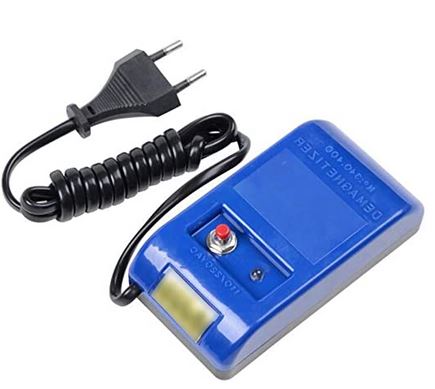Last updated on July 2, 2024
Even the most accurate mechanical watch gains or loses a few seconds a day. If we look at a modern example, the ETA 2824-2 movement, which is a common movement for entry to mid-level Swiss watches. It has a typical range of +/- 12 seconds a day. A COSC chronometer will have an accuracy of +6 to -4 seconds a day. A Rolex Superlative Chronometer will have an accuracy of +/- 2 seconds a day. These are modern watches, for antique timepieces, after many years of use, we are looking at a more realistic +/- 2 minutes a day. That said, some antique watches can keep time equivalent to the ETA movement above. I have several in my collection where the accuracy is within seconds per day rather than minutes. Various factors can influence a watch’s precision and watches can be adjusted to cater for these. In this post, we will take a look at why an antique pocket watch might run slow.
Physical environment
An antique pocket watch is sensitive to changes in its physical environment, such as temperature, pressure, humidity or gravity. For example, when the temperature rises, the materials traditionally used to make the springs and balance wheel expand. This alters the stiffness of the spring and the inertia of the balance, which affects the frequency of the movement. Normally, under high temperatures, a watch tends to lose time, and under low temperatures, it tends to gain time. Over the long term, antique watches need to be stored and maintained carefully, to avoid these environmental issues.
Magnetic fields
Magnetic fields can also play havoc with the movement of a mechanical pocket watch. A magnetised watch may gain or lose time, although typically they run fast. It is important not to leave a watch close to magnetic objects for a long time. In particular, mobile phones, television and PC speakers, hair-driers, electric razors and refrigerators all have magnetic components. Remember, that antique watches would predate all of these machines and that they would have been designed accordingly. Modern watches can use materials that are less susceptible to magnetic fields, antique watches do not. It’s important to remember that a magnetised watch remains magnetically charged even after being removed from the magnetic source.
Watches can be tested for magnetism simply by holding them next to a magnetic compass. If the compass needle swings erratically, then the watch is magnetised. There are also smartphone apps that can detect if your antique watch has been magnetised.
Degaussing
If you determine that your antique pocket watch has been magnetized, you will need to find a way for getting it degaussed (demagnetised). Fortunately, demagnetizing a watch is a relatively easy and quick process. Generally, you have two options. First, take your watch to your local watchmaker. Every watchmaker has demagnetising equipment available in their workshop and will be able to resolve the problem in a few minutes. The cost of this service is generally minimal. Second, you can buy your own degaussing machine for less than £20. You place the watch on the degausser and press a button. The degaussing process only takes around 10 seconds and then you remove your watch from the device.
Friction
Friction is inevitable in a mechanical pocket watch and is another factor that can affect the movement’s accuracy. There are two types of friction, dry friction (contact between solid surfaces, such as the gear train) and fluid friction (contact between fluids such as air). Friction is influenced by natural wear to materials, corrosion or lubricants drying out. If the friction gets severe, it can cause the watch to stop completely.
Service
A watch should be serviced at least every five years (taken apart, cleaned, reassembled and lubricated). Otherwise, the lubricants dry out or friction causes tiny particles to form that deposit themselves between the gears’ teeth, causing the watch to run slow. You need to find a good watchmaker that you trust to work on antique watches. There is a list of accredited repairers at the British Horological Insitute.
A list of additional posts regarding antique watches can be found on the Guides page.


Wonderful article! I have an antique pocket watch that I had inherited. It says “Harry Le Moine” on the dial. I don’t wear it myself, but my husband does on special occasions. It suddenly started running very slowly, losing hours a day and became totally impractical as a watch. After reading your post we took the watch to an accredited repairer for a service. It had been magnetised, but also had a complete service and is now running perfectly well. I think it had become magnetised because my husband left the watch next to some electrical equipment. It is now kept safely stored away in a drawer. Thanks for the advice!